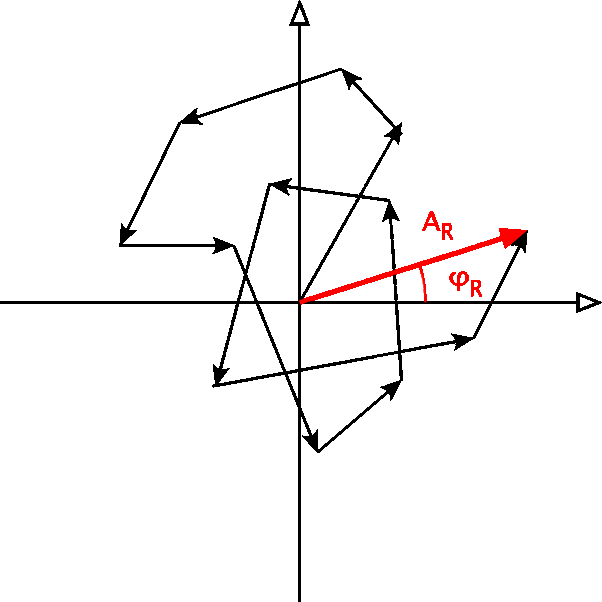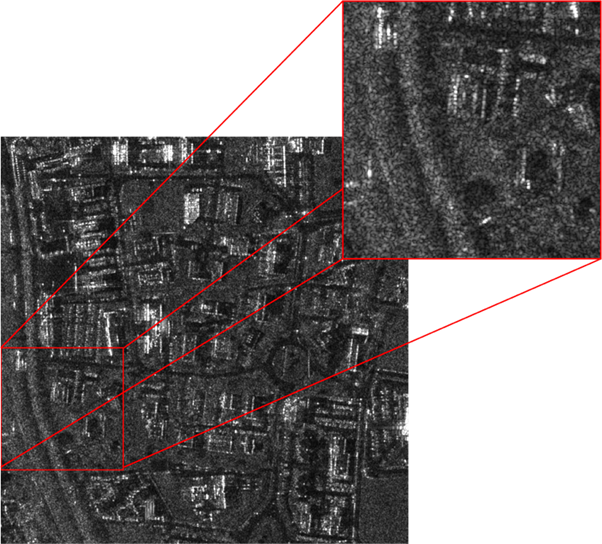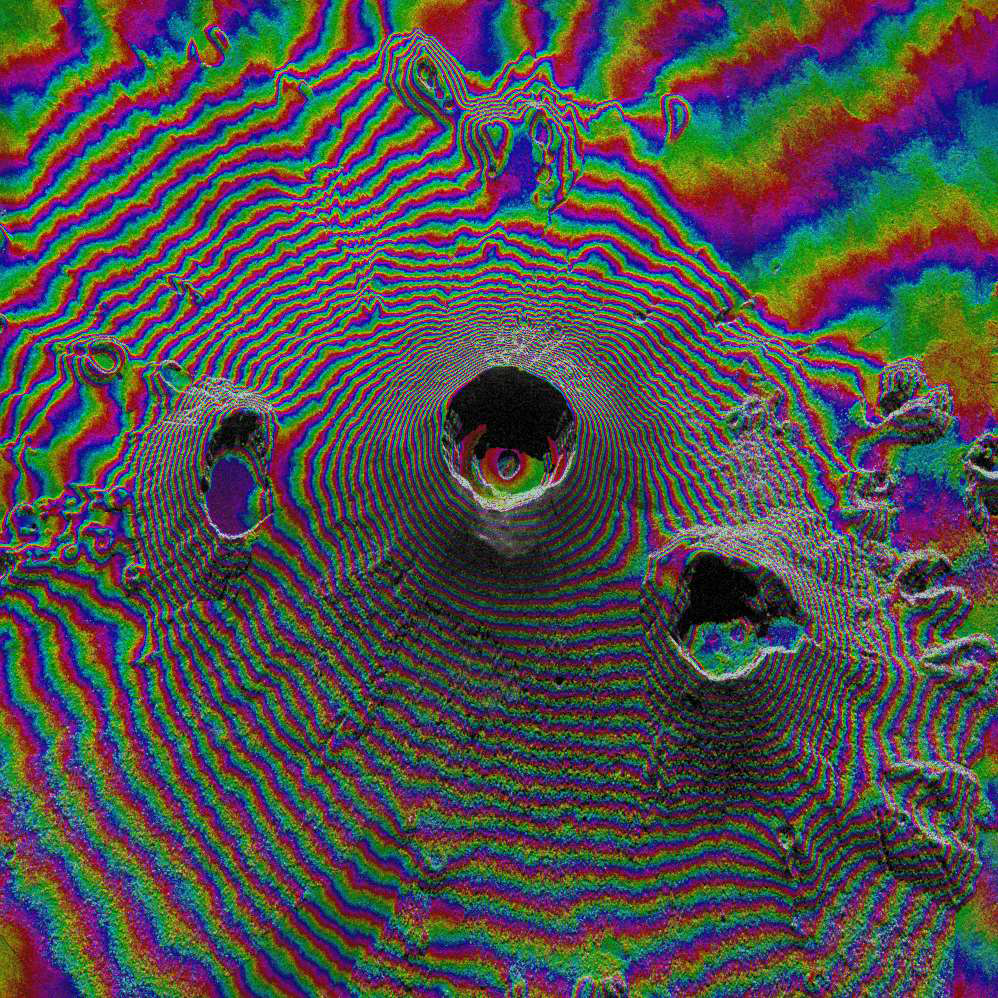III - WHAT IS A DIGITAL IMAGE?
2- CHARACTERISTICS OF AN IMAGE
2.5- Notion of speckle for radar images
A pixel always represents a certain surface or volume that contains several elements, each of which returns all or part of the received signal. In radar range, this signal, emitted by each element in the pixel, has an amplitude and a phase. The observed signal of the pixel is thus composed of all these returned signals.
An amplitude and a phase can be represented by a vector. So it is the sum of these vectors that will form the total response of the pixel.
Given the large number of objects present in a pixel, this sum can appear random and, in any case, vary greatly from pixel to pixel. This variation gives rise to what is called the "speckle" and gives the amplitude image a grainy appearance.
 |
|
Although the radar image looks random outwardly, this is not the case at all. If two observations take place under exactly the same conditions (same trajectory, same viewing angle and same observed terrain), then each element of the pixel will react in the same way to the received signal. Thus, the speckle is deterministic. In other words, if conditions do not change too much between two shots, then the speckle is largely preserved. This allows two successive radar images to be "interfered", that is, to calculate and use the phase difference between two successive images of the same scene. This is called radar interferometry (InSAR).



